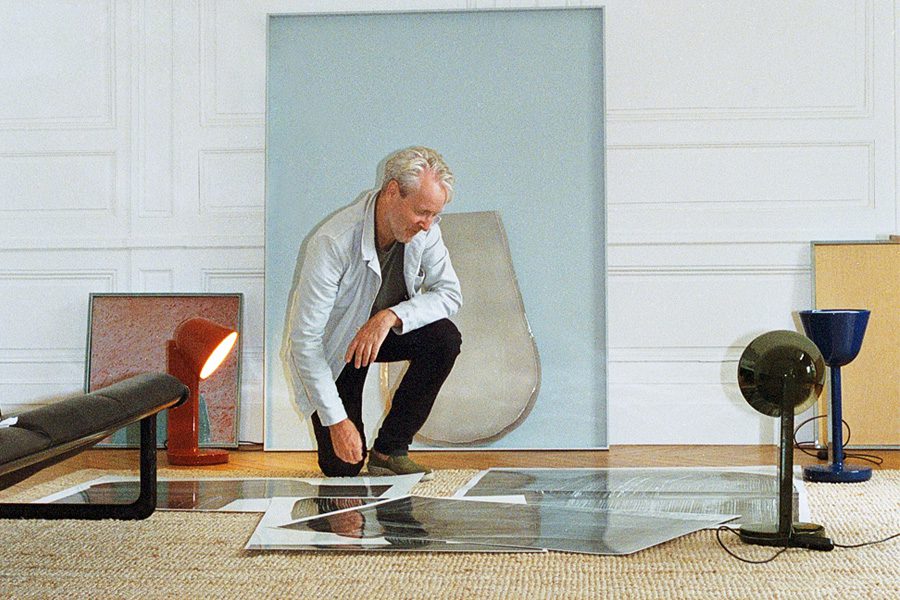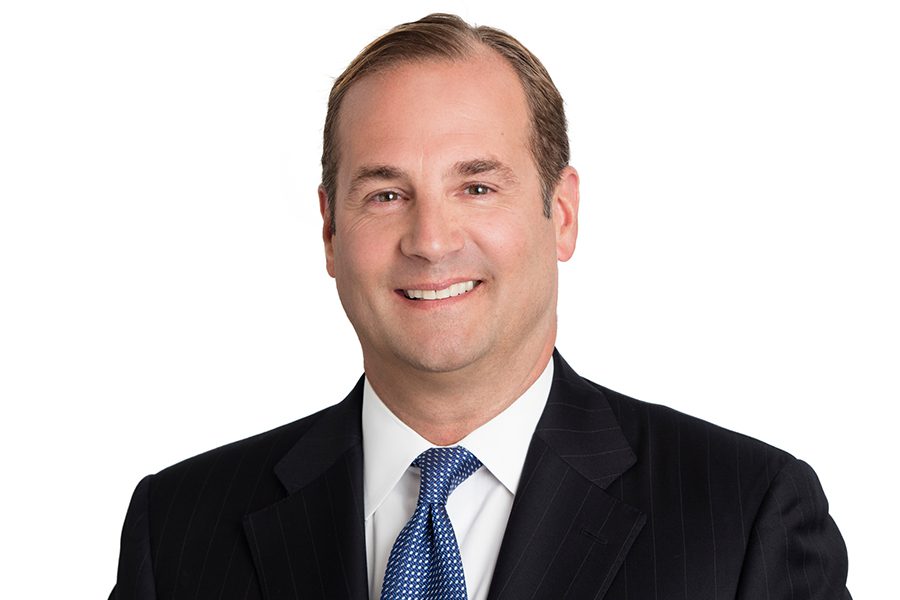Since starting AJ Capital Partners in 2008, Ben Weprin has taken the company’s name, Adventurous Journeys, to heart, developing and renovating hotels that would be on many a wishlist: Hotel Saint-Barth in the French West Indies, the Raleigh in South Beach, Calistoga Ranch in Napa Valley, Soho House Chicago, Chicago Athletic Association (CAA), and most recently, the Pontchartrain in New Orleans.
With a knack for rehabbing buildings full of soul and character (with the help of some design greats), in 2014, he set out on another adventure: the launch of Graduate Hotels, which brings affordable properties with hyper-local design to underserved college markets—Tempe, Arizona; Madison Wisconsin; Oxford, Mississippi; and Athens, Georgia, to name a few, with plans for 20 hotels by 2019. And he’s only getting started, as it seems whatever the Midwesterner touches turns to gold.
Over the phone, he and guest editor Jason Pomeranc chat about how he fell in love with hospitality, why it’s important to think big, and how the secret to a successful collaboration is as simple as having a conversation.
How did you get into hospitality?
I had no experience in hospitality but I was working for prolific entrepreneur and restaurateur Larry Levy’s family office, and he had just bought the Esperanza Los Cabos; he acquired the hotel in a partnership and then bought part of Auberge Resorts, the operating company. I had humble beginnings—I certainly wasn’t exposed to luxury hospitality. I went down to the hotel [in Mexico] for the first time and I was sitting by the pool in my pressed chinos and blazer and it’s 98 degrees. This woman walks up and asks me if I’d like a foot massage. Then another woman came around 40 minutes later and offered me a pineapple popsicle. I thought, ‘This is the greatest thing I’ve ever experienced in my entire life.’ So I fell in love with hospitality and all of the dynamics through my exposure with Auberge Resorts.
You launched AJ Capital in 2008. Why was it the right time?
It was market timing. There was an opportunity to acquire Larry’s interest in Auberge. I love the brand, I loved the opportunity, and it was a great segue and portal to meet a lot of owners and build a brand around AJ. It gave us a nice competitive advantage in operating, investing, and how to align interest and the structural state.
When you started some of your larger projects—for instance, renovating the Hotel Saint-Barth Isle de France in St. Barts [later sold to the LVMH group]—it was in a unique category. You were going for the super luxury resort market, which is intimidating to a lot of owners. Why did you think it was a sector that you could outperform the bigger or more experienced real estate guys at the very early stages of your company?
Because of the downturn there were more opportunities in the space that traditionally haven’t traded or never did. We were having those conversations with people prior to the recession, so that’s where a lot of the relationships were based. Coming in and talking to these people and understanding the compression in some of these markets and having a distinctive asset—hospitality is such an emotional decision for leisure travel.
The hotels continue to perform because there’s only one of them, and only one experience like that in each of these specific markets. We would talk to the owners and explain that we would be wonderful stewards of their asset, and they were comfortable with us. Knowing that we’re smaller and had the best interest in the asset in mind, gave us a platform and runway. It evolved to larger hotels, more innovation, and heavier value-add components, and that’s what got us there.
Most of the people [who] originally [invested with us to start AJ] were real estate or hotel investors because people thought we were crazy. But if you really understood the market dynamics and the assets and what we were getting into, we were kind of the only people. We had a niche and wanted to exploit that.
Tell us about the name.
My wife had it on a holiday card, ‘wishing you a happy new year and an adventurous journey.’ In 2008, I had started business school, had my first kid, and started the company. It was an adventurous journey, to say the least. We’re really thankful and appreciative to have the opportunities that we do in front of us. It is a wild journey, and we never know where it’s going to go; I just wanted to celebrate that—and have a company name that could confuse people [into thinking] we’re a tour operator. [Laughs]
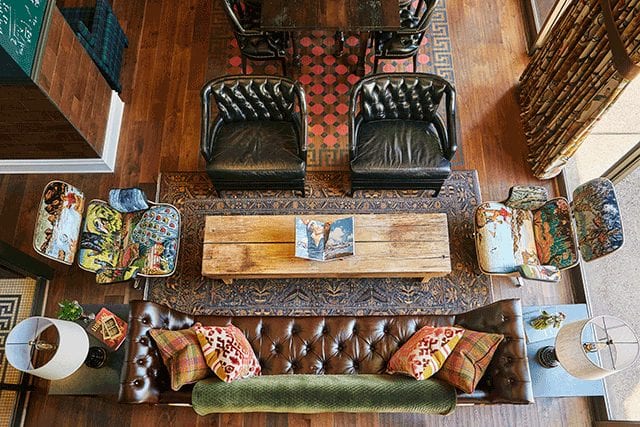
A view of the Graduate Ann Arbor’s lobby; photo by Christian Horan

The reception area at the Graduate Charlottesville
Most recently you started Graduate Hotels, cool properties in college towns, which for many in the industry was a ‘why doesn’t this exist already?’ moment. How did the idea come about?
We had done four hotels in Chicago, and one of them was the Hotel Lincoln in the Lincoln Park neighborhood. It had the characteristic high barrier to entry, lower price point but really told the story of the community. It had a strong narrative of connecting to local people and having them take ownership. They take pride in where they live and who they are, but didn’t have a hotel that really reflected that.
We wanted to emulate that, and we started looking at the college market and saw there was a real lack of product in that vein and nothing really national in terms of a brand built around those areas of culture, commerce, and creativity.
I’m from one of these towns. I grew up right next to the University of Dayton in Ohio, went to undergrad at University of Tennessee—which is a great college town—and graduate school in the Big Ten [at Northwestern University in Evanston, Illinois]. I really could see the dynamics around these markets. We pride ourselves on the sort of high to low. Look at a restaurant group that’s done a fancy restaurant and then a Shake Shack—they still have the same service, culture, and the same idea of taking whatever you do and being the best at it. We take that approach to everything that we do, having the same hospitality culture regardless of price point or place in a market.
Graduate’s eclectic design isn’t like any other brand. Is that one of the ways you’re separating yourselves?
I really connected with Andrew [Alford, AJ’s chief creative officer] on a personal level and his approach, and what we try to do, is design that [looks like it] evolved over time. There isn’t a programmatic approach; it is layered and textured and found and discovered and added here and there. Andrew speaks that language better than anybody I’ve ever worked with.
We want to be hyper local on each one of the assets and find out the history, the heritage, and the traditions that make these towns really special and celebrate that. That’s through art, the programming, and the design—these subtle ways that people discover things and then become ambassadors and salespeople for what we do.
And it’s not the obvious.
You would expect to go to a school in Lincoln, Nebraska and see the Tommy Frasier approach [an award-winning former quarterback for the University of Nebraska]. That’s not what we’re doing. We’re looking for the local heroes and the guys that you would only know as a resident or a student and then magnifying that story on a macro level.
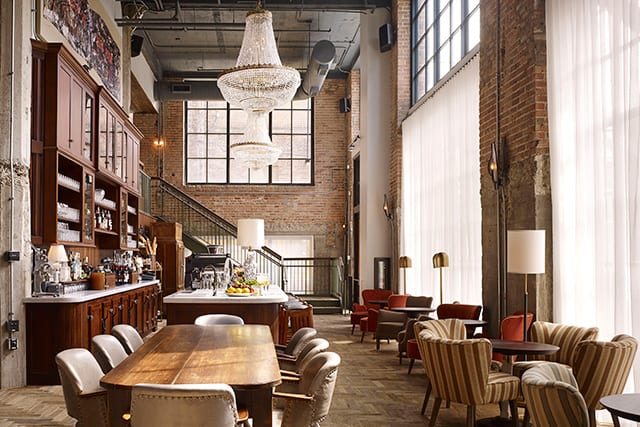
The lounge at the Soho House Chicago; photo by Dave Burk
Besides Auberge and Graduate, you opened four very successful lifestyle hotels in Chicago—you mentioned Lincoln Park, and there’s also Soho House, the Thompson Chicago, and CAA—within just a little more than three years. What do you look for in a deal?
We wouldn’t take it on unless we were really passionate about it and have a point of view. We love historic assets that have a history, that we can reflect the past and communicate what’s happening in each one of these markets in the future. It’s a fine balance, and we look for those assets that really have the strong emotional connection to the community or the guests.
You’ve worked with renowned, high-profile designers with very strong personalities on various projects. What is the secret to making it to the finish line together? Is there one you are really proud of?
That’s a really good question because you know how difficult it is. The Chicago Athletic Association has obviously gone above and beyond any of our expectations in terms of becoming a living and breathing thing. Roman and Williams designed that hotel. It’s really about respecting them, their point of view, and not being dismissive just because something is so outrageous or so over the top or incredibly expensive. I [believe in] hearing people out and giving each idea the credence and consideration that it deserves, having a conversation with them about why it does or doesn’t work, and being respectful.
The big problem with a lot of developers is they think they’re designers. I’m not a designer. Designers are artists; they have a real, strong point of view and just being able to hear them out opposed to saying yes or no [is important]. They’re so talented. And they’re smart, reasonable people. You have to make sure you’re very transparent, laying down the groundwork and expectations about timing and budget and what you want the look and feel of the end product to be, then giving them space to operate.
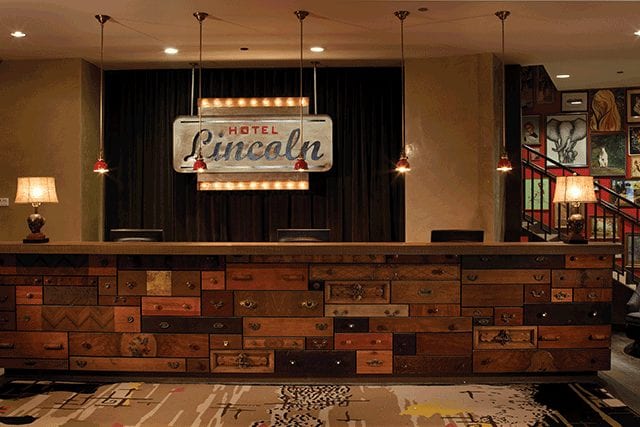
The reception at Chicago’s Hotel Lincoln
Is that the same for designers?
Yes, it goes both ways. We all want the best thing for the project and that may not always be exactly what they want or I want, but in terms of timing and budget, the only way [a project] works is if it’s responsibly underwritten and delivered on time and on a budget. If you can’t do that, you don’t have anything.
That’s good advice. What’s one piece of advice you’ve listened to?
Sam Zell, who I think is an amazing real estate investor, always talks about avoiding competition and trying to do things that are distinctive, whether it’s investing or development. To find areas that you can exploit, where you’re the only game in town—we think about that a lot. Trying to think big is something we’re working on as a company. And when we do come up with an idea, just going for it in terms of taking risk—because if something seems farfetched or impossible doesn’t mean that we shouldn’t look at it and explore it to see if we can’t make it happen.
What’s next for AJ?
We are looking at other asset classes—office, retail, multifamily—how we can take the hospitality culture design aesthetic and deploy it into other real estate. How you activate and program a space, it’s all the same fundamentals but with the design-driven twist.
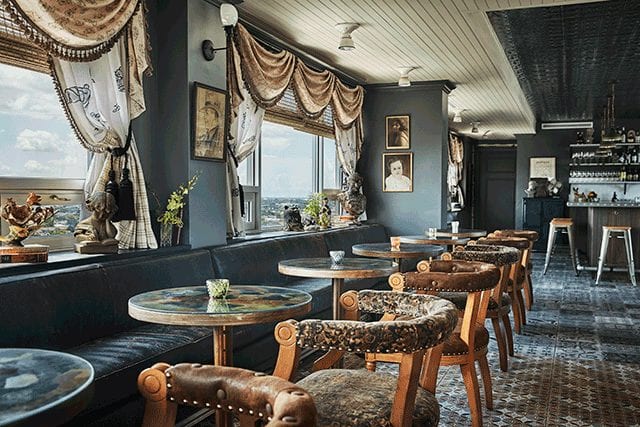
Hot Tin restaurant at the Pontchartrain in New Orleans; photo by Christian Horan
Since this is the new icons issue, is there anyone you think is doing great things in the industry right now?
We did the Thompson Nashville with Parts and Labor Design. We enjoyed working with them on the design side. There are a lot of really interesting restaurants and food concepts. The guys at St. Roch Market in New Orleans are spectacular, the best food all-service operators in the country. There’s Michael Klong who has a coffee company called Truebrew, which is basically a craft coffee distributor and retail outlet. You go into a coffee shop and it has 15 or 20 different varieties. I love what he’s doing.

